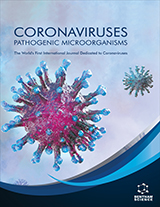Abstract
The β-lactam family of antibiotics, the penicillins and cephalosporins, act primarily at the level of the bacterial membrane by inhibiting membrane proteins associated with cell wall synthesis. As a family they represent some of the most clinically relevant antibiotics known, although antibiotic resistance has limited the use of older generation β-lactams, novel compounds are currently emerging from research efforts worldwide. Fortuitously, there are other families of antibiotics of peptide-derived origin and possessing polyfunctional chemical groups-compounds with complex and multiple pharmacophores with biological function- that also act at the level of the bacterial membrane. Polyfunctional antibiotics interfere with bacterial growth by direct interaction with the cell membrane lipid bilayer and its constitutive array of metabolically active enzymes and structural proteins.
Keywords: Bacterial Membrane, β-lactam family, penicillins, cephalosporins, pharmacophores, cell membrane, lipid, enzymes
 25
25





















